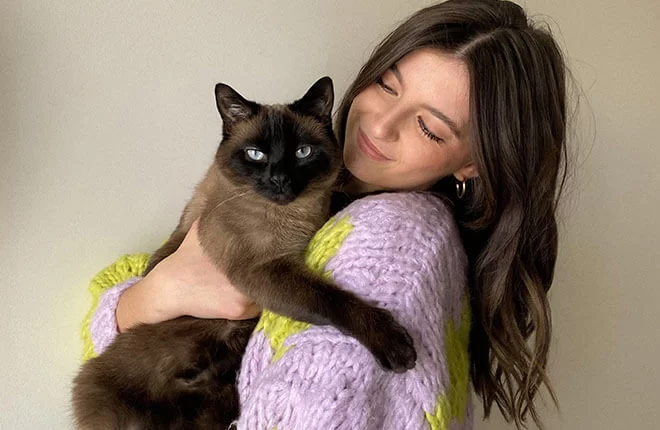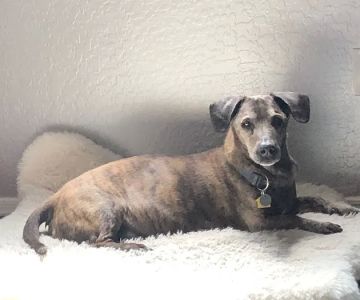Understanding and Managing Your Cat’s Anxiety
If you're a cat owner, you may have experienced moments where your cat seems nervous, stressed, or even frightened for no apparent reason. Cats can suffer from anxiety just like humans, and understanding how to address it is key to improving their quality of life. As a pet parent myself, I’ve learned that dealing with a cat’s anxiety takes patience, empathy, and a few effective strategies that can calm their nerves and restore peace in the home. In this article, I’ll share tips and techniques that have helped me handle my own cat’s anxiety, and how you can use them to help your furry friend.
1. Recognize the Signs of Anxiety in Cats
The first step in addressing your cat’s anxiety is recognizing when something is wrong. Cats can’t tell us when they’re feeling stressed, so it’s up to us to observe their behavior and look for signs of anxiety. Some common symptoms of cat anxiety include:
- Excessive grooming or licking
- Hiding or withdrawing from interaction
- Changes in eating habits, such as loss of appetite
- Increased vocalization (meowing or yowling)
- Aggressive behavior or acting out of character
- Urinating outside the litter box
My cat, Mia, went through phases where she would suddenly stop eating or hide under the couch for hours. Once I recognized these signs, I was able to better understand her anxiety and start addressing it effectively. Keep an eye out for these behavioral changes to identify anxiety early and take action.
2. Identify Common Triggers for Anxiety
Cats are creatures of habit, and any disruption in their routine can lead to stress or anxiety. Some common triggers for cat anxiety include:
- Moving to a new home or environment
- Loud noises, such as thunderstorms or fireworks
- Changes in household dynamics (new people or pets in the house)
- Trips to the vet or grooming sessions
- Separation from their owners (especially if they are left alone for extended periods)
For Mia, one of the biggest anxiety triggers was a change in our daily routine. When I started working from home, her environment became quieter and less predictable, which caused her to act out. Identifying the trigger is the first step to alleviating her anxiety.
3. Provide a Safe and Comfortable Space
Cats need a space where they feel safe and secure, especially when they are anxious. Creating a safe space in your home can give your cat a place to retreat when they need to calm down. This space should be quiet, secluded, and away from household traffic. A cozy bed or blanket in a hidden corner can work wonders.
I found that Mia really appreciated having a soft bed under the kitchen table where she could retreat whenever she felt overwhelmed. Having this space allowed her to rest and regroup without feeling exposed to the hustle and bustle of daily life. Providing your cat with a personal space helps reduce anxiety and gives them a sense of control over their environment.
4. Use Calming Products for Cats
There are several products on the market designed specifically to help calm anxious cats. Some of the most popular options include:
- Calming Diffusers: These plug-in devices release pheromones that mimic the natural calming scent cats produce. It’s like a calming signal from their mother, which helps them relax.
- Calming Treats: Specially formulated treats that contain ingredients like valerian root or chamomile can help soothe an anxious cat.
- Weighted Blankets or Shirts: Some cats respond well to the gentle pressure of a weighted blanket, which can have a calming effect.
- Herbal Supplements: Natural supplements that contain ingredients like CBD or valerian root can help reduce anxiety in cats. However, always consult with a vet before introducing new supplements.
I’ve had great success using a calming diffuser for Mia. After plugging it in, I noticed that she was less agitated during thunderstorms, which had previously been a major source of her anxiety.
5. Maintain a Consistent Routine
As I mentioned earlier, cats are creatures of habit. A change in their routine can cause them to feel stressed and anxious. To help your cat feel more at ease, try to keep their daily routine as consistent as possible. This includes feeding them at the same times each day, maintaining a predictable playtime schedule, and ensuring they have access to their litter box at all times.
For Mia, sticking to a consistent feeding and play schedule really helped. She always knew when to expect her meals and when it was time for a play session, which gave her a sense of security. Even small changes, like moving their food dish or changing the time you play with them, can trigger anxiety in some cats. Consistency is key to reducing that stress.
6. Provide Mental and Physical Stimulation
Sometimes, a lack of mental or physical stimulation can cause anxiety in cats. Cats, especially younger ones, need regular playtime and exercise to keep their minds and bodies healthy. Interactive toys, puzzle feeders, and cat trees can provide both physical exercise and mental challenges, which help keep your cat engaged and less likely to be anxious.
For Mia, I found that using puzzle toys to hide treats kept her mentally stimulated and distracted from her anxiety. The extra activity allowed her to release pent-up energy and reduced her stress levels. If your cat is anxious, try introducing new toys or activities to keep them busy and entertained.
7. Consider Behavioral Therapy
If your cat’s anxiety persists or worsens, you may want to consider seeking professional help. Behavioral therapy, provided by a certified animal behaviorist, can be incredibly effective in addressing anxiety-related issues. These professionals can observe your cat’s behavior and work with you to create a training plan to address their specific needs.
I reached out to a behaviorist when Mia’s anxiety didn’t improve after trying various calming techniques. The behaviorist helped me understand Mia’s anxiety better and gave me specific exercises and strategies to use at home. Working with a professional helped me gain a deeper understanding of my cat’s needs and made a world of difference in her anxiety management.
8. Consult Your Veterinarian
Lastly, if your cat’s anxiety is severe or affecting their health, it’s important to consult your veterinarian. They can rule out any underlying medical conditions that might be contributing to the anxiety and can recommend medication or additional therapies if necessary.
When Mia’s anxiety became unmanageable, I took her to the vet to ensure there were no other health issues causing her distress. Fortunately, after a thorough check-up, the vet confirmed that her anxiety was the primary issue, and we could proceed with managing it through behavioral strategies and supplements. Sometimes, medical intervention is needed alongside behavioral techniques to give your cat the relief they deserve.
If you're looking for additional support and personalized advice on managing your cat's anxiety, I recommend visiting Hidden Brook Veterinary for expert care and solutions tailored to your cat's specific needs.












